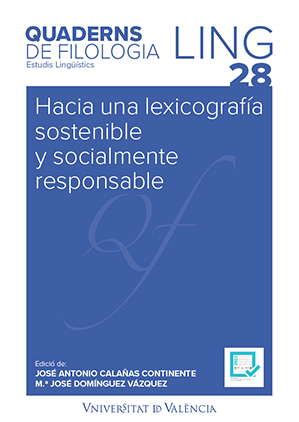A corpus-based study of semantic neology of the covid-19 pandemic
DOI:
https://doi.org/10.7203/qf.0.26663Keywords:
collocations, diachronic corpus, dictionary updating, semantic neology Abstract
Abstract
Detection of semantic neology, or the emergence of new meanings in existing words, is a challenging task because it is not related to formal changes as in formal neology. In this paper, we make a series of studies to detect semantic neology in Spanish nouns in 2022, a year in which covid-19 pandemic still existed, but also other important global events, such as the Ukraine war, or economic inflation. We compare a corpus of texts from 2022 to a pre-pandemic corpus, considering changes in collocations of the target nouns. We use some statistic parameters for collocations analysis, in combination with manual analysis. Results indicate that combining key words with topic-related contexts give the best results to detect semantic neology with semi-automatic methods.
 Downloads
Downloads
Downloads
Published
How to Cite
-
Abstract762
-
PDF375
Issue
Section
License
 Este obra está bajo una licencia de Creative Commons Reconocimiento-NoComercial-SinObraDerivada 4.0 Internacional.
Este obra está bajo una licencia de Creative Commons Reconocimiento-NoComercial-SinObraDerivada 4.0 Internacional.
Authors who publish with this journal agree to the following terms:
- Authors retain copyright and grant the journal right of first publication with the work simultaneously licensed under a Creative Commons Attribution License that allows others to share the work with an acknowledgement of the work's authorship and initial publication in this journal.
- Authors are able to enter into separate, additional contractual arrangements for the non-exclusive distribution of the journal's published version of the work (e.g., post it to an institutional repository or publish it in a book), with an acknowledgement of its initial publication in this journal.
- Authors are permitted and encouraged to post their work online (e.g., in institutional repositories or on their website) prior to and during the submission process, as it can lead to productive exchanges, as well as earlier and greater citation of published work (See The Effect of Open Access).



